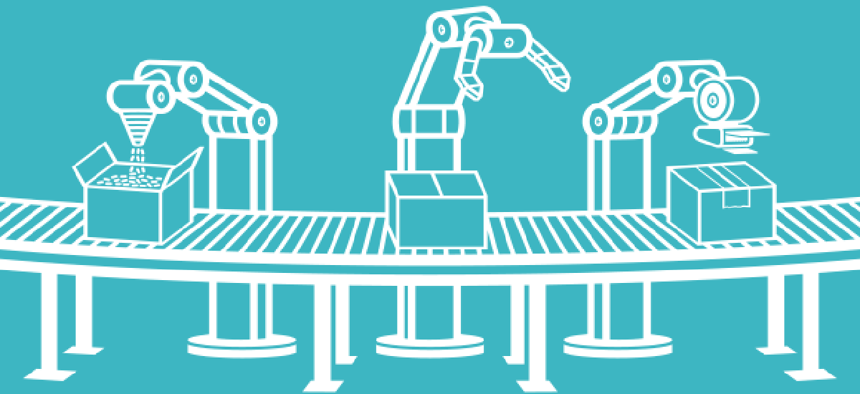What does it take to build agile robots?


Connecting state and local government leaders
The Agile Robotics for Industrial Automation Competition aims to make industrial robots more capable, versatile, collaborative and easier to program.
Most industrial robots today are one-trick ponies. They perform only a few tasks well, and any change to their processes requires a significant amount of off-line programming and downtime. In fact, 45 to 60 percent of the cost of deploying a robot into a manufacturing operation goes toward programming efforts, according to the National Institute of Standards and Technology.
However, if robots had the intelligence and agility to perform different tasks without additional programming, they would be more productive, more autonomous and to require less time from shop floor workers.
To nudge development in this direction, NIST has announced the Agile Robotics for Industrial Automation Competition (ARIAC), a simulation-based challenge the agency is planning that aims to make industrial robots more capable, versatile, collaborative and easier to program.
Craig Schlenoff, who leads NIST’s Cognition and Collaboration Systems Group, believes that in order to give industrial robots agility, advances in four specific areas are required:
- Failure identification and recovery that allows robots to detect failures in a manufacturing process and automatically recover.
- Automated planning that minimizes or eliminates the upfront programming time when a new product is introduced.
- A fixtureless environment where robots can sense their surroundings and perform tasks on manufactured parts that are not in predefined locations.
- Plug-and-play functionality, in which robots from different manufacturers can be swapped in and out without the need for reprogramming.
Competition participants will be using the latest advances in artificial intelligence and robot planning and control to tackle these challenges, NIST said. The results will then be released in the public domain for evaluation on the shop floor. NIST will use the results and lessons learned from the challenge to develop metrics, test methods and tools to advance robot agility.
But before the competition officially begins, NIST is seeking input on defining the challenges. “We want to make sure that the challenges in this competition are truly representative of those facing industry,” Schlenoff said.




